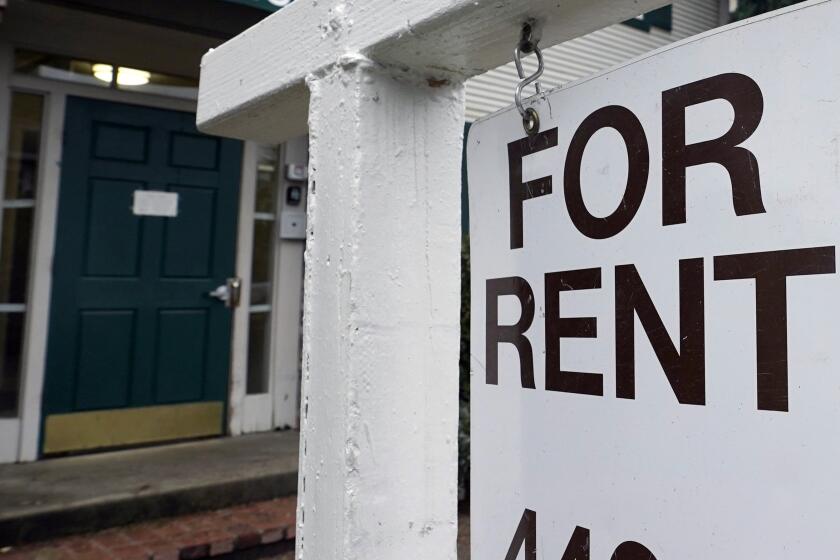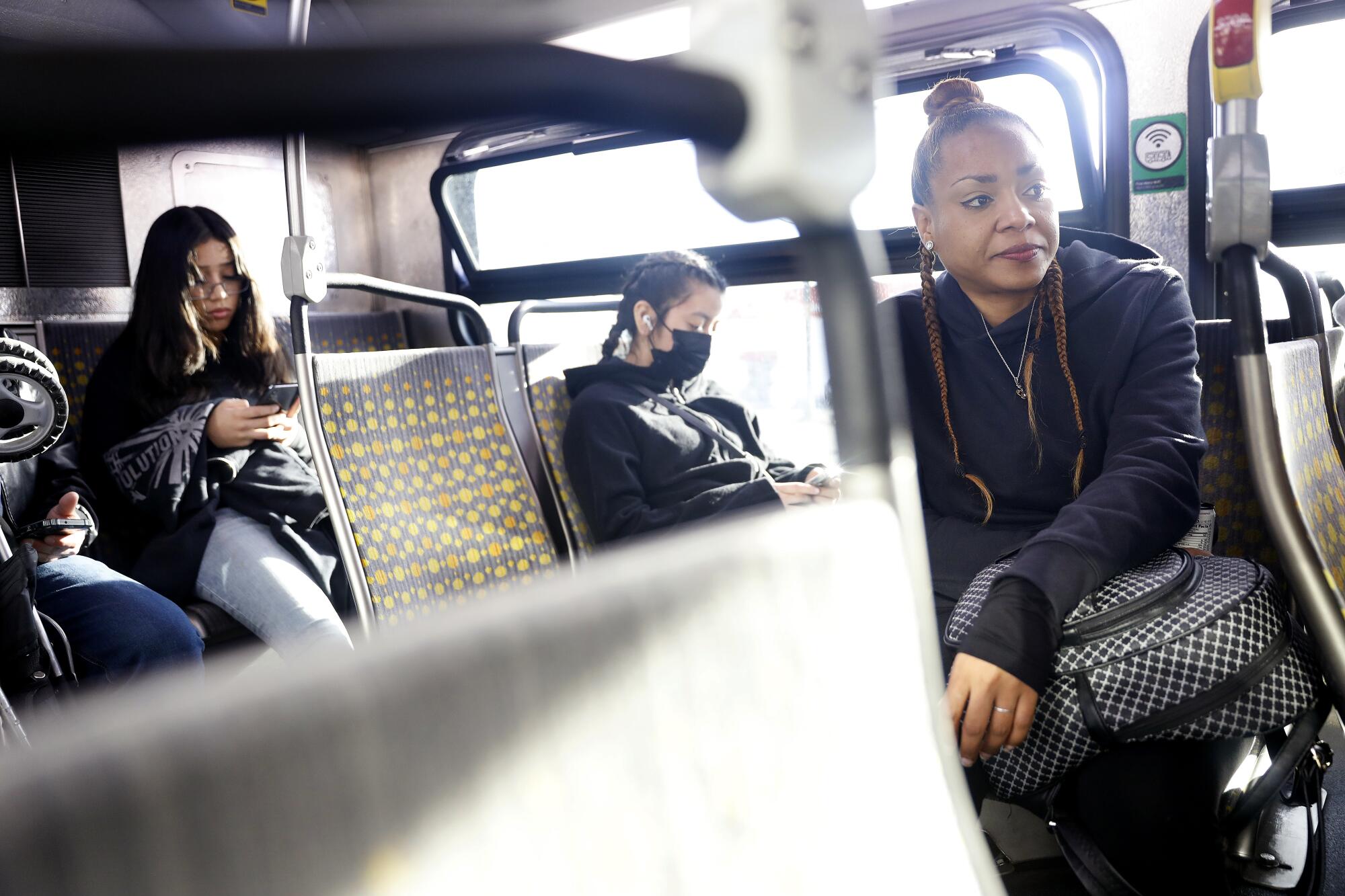
- Share via
In her small studio apartment in Westlake, Leticia Graham stared at her tablet as the courtroom on her screen filled with people like her: renters facing eviction. With mounting panic, she realized she was supposed to have been there in person.
She had little saved for a new apartment and knew losing her case would leave her homeless.
But like a majority of renters in eviction court, she did not have a lawyer, and the judge was explaining that she had made crucial mistakes as the clock ticked on her trial, which was scheduled for that day. It was her only shot at staying longer in her home.
Contrary to what she believed, the judge said, a county eviction moratorium did not prevent her from being evicted. That was a mistake being repeated by renter after renter in the county’s eviction courts. And since Graham did not have a car and was appearing remotely, she would not be able to present evidence, other than her word, to win her case.
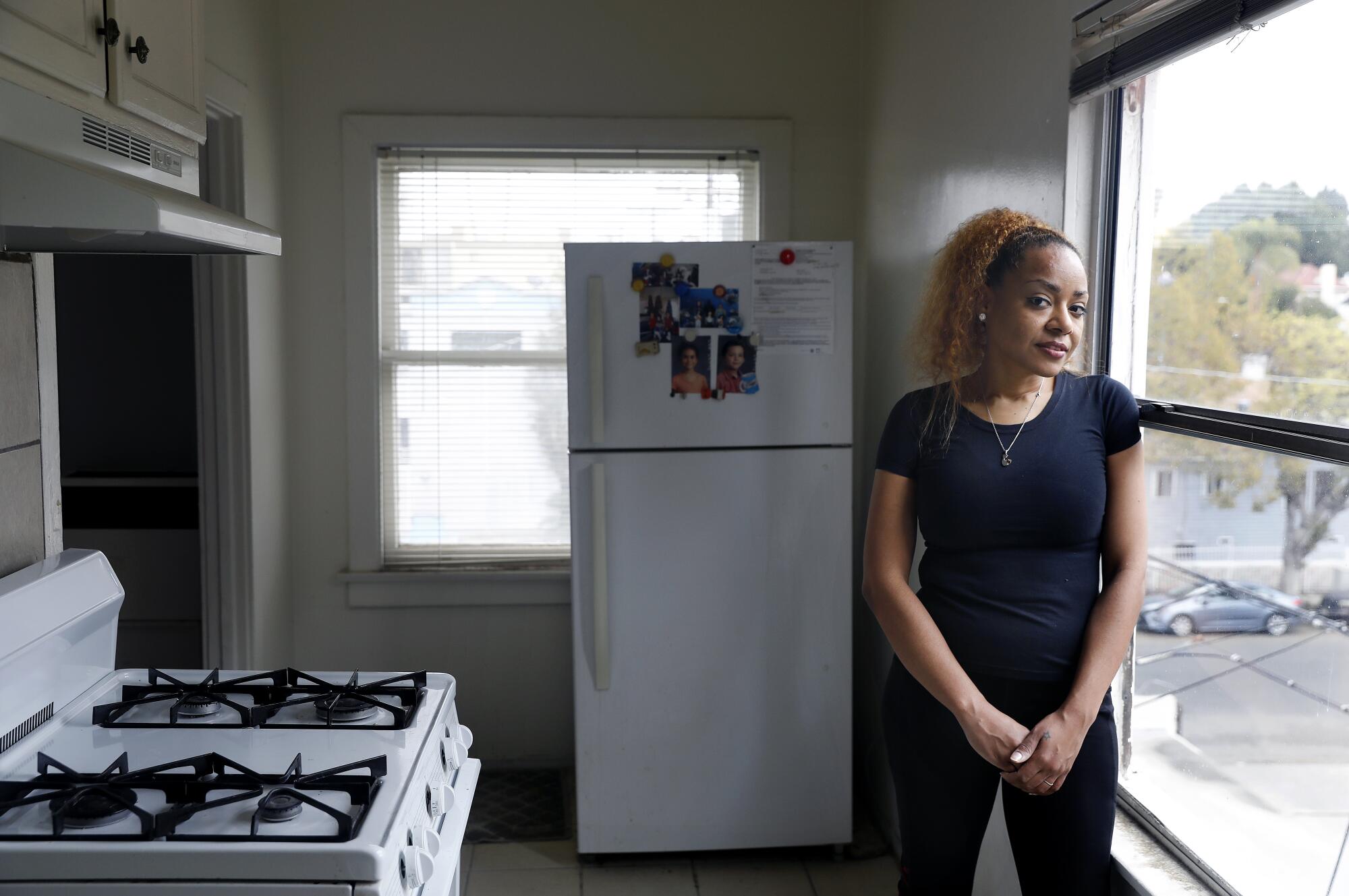
“Ms. Graham,” the judge said to Graham’s image on the screen, “you’re in a serious spot right now. You need to catch the bus, you need to run out there … you need to get to the Stanley Mosk Courthouse.”
“I close at noon. You need to be here well before then,” the judge added.
Graham put on her running shoes, stuffed a thick stack of receipts and bank records into her backpack and ran to the bus stop on the corner, arriving just as the doors to the No. 16 bus to downtown were closing.
The L.A. City Council has voted to allow landlords to resume evictions Feb. 1. But additional planned tenant protections have not passed.
She hadn’t prepared much of a case. She owed thousands in rent that was not covered by the limited COVID-19 pandemic relief she had managed to secure. But she was desperate for more time — time to work more hours at her retail job, to save enough for an inevitably higher monthly rent, to get back on solid ground after the pandemic left her jobless and in a spiral of depression.
“I’m not going to fold,” she told herself as the bus made its way toward downtown.
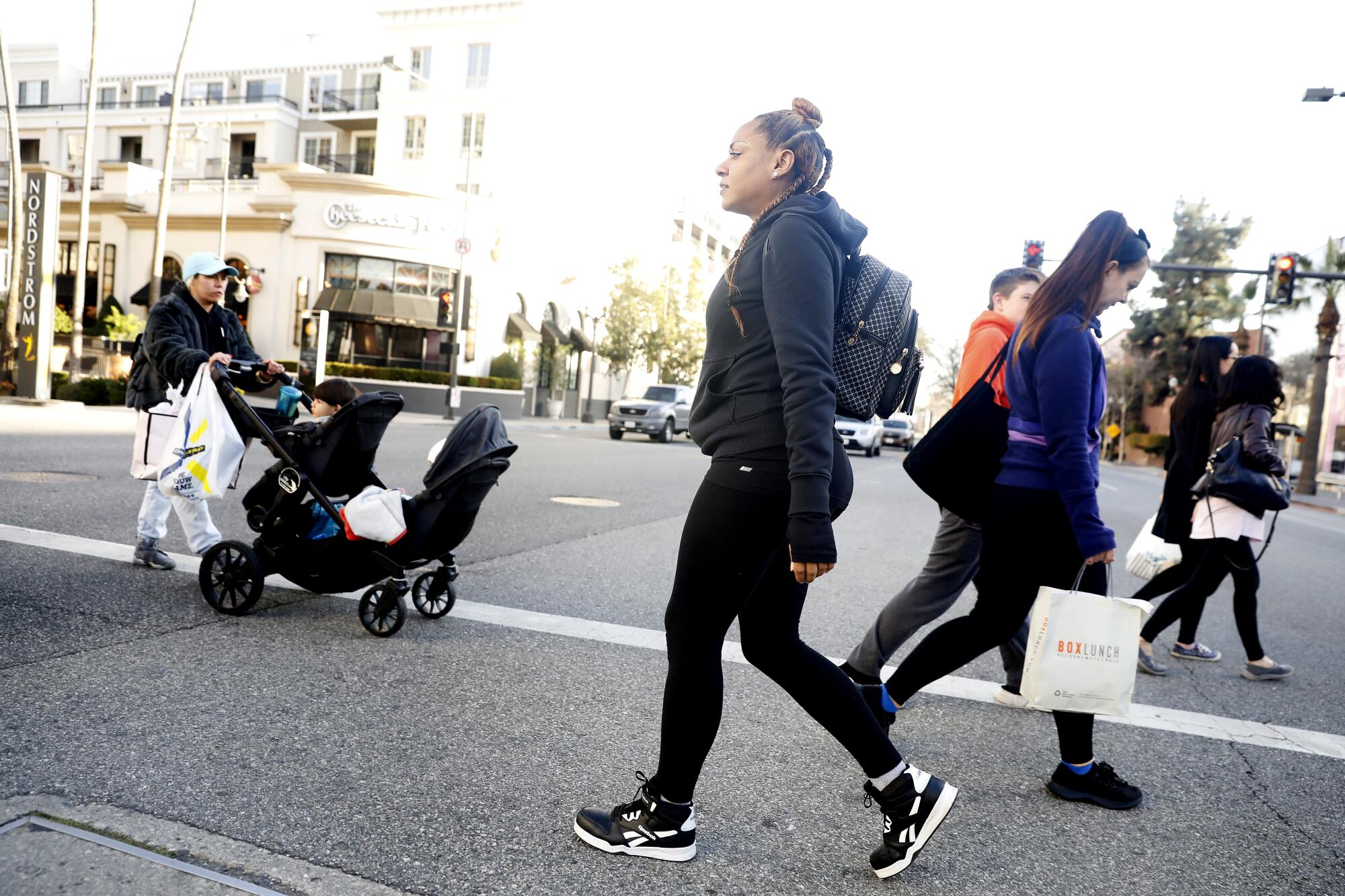
Eviction cases in Los Angeles County never fully stopped in the pandemic, but they slowed to a few hundred filings a month. Since May, as protections have lifted, they’ve returned to pre-pandemic levels of more than 3,000 per month. Kyle Nelson, a postdoctoral researcher at UCLA who has been compiling the numbers, expects they will increase even more, to about 5,000 per month, as protections continue to expire.
Graham’s case is similar to the type of case that Nelson and others believe will flood the courts — renters who fell thousands of dollars behind on rent during the pandemic and don’t earn enough money to pay it back.
Once they’re filed, eviction cases move quickly compared with the typically sluggish pace of civil court — at times they are decided in a 10-minute trial before a judge. Renters rarely have lawyers, while landlords almost always do.
Day after day, tenants show up in court with a false impression of how the system works. Some, like Graham, believe that pandemic-era renter protections will keep them from being locked out of their homes. Often, they believe they can simply explain their side of the story and the judge will understand, only to find themselves fumbling as they navigate complex rules of evidence and other legal procedures, combined with labyrinthine local and state housing laws that are challenging even for lawyers and judges to track.
On that day in February, Graham’s eviction was one of about two dozen eviction cases — about half of them trials in front of the judge — that were scheduled in Department 91, on the sixth floor of the Stanley Mosk Courthouse in downtown. Similar numbers of people file into three other eviction courtrooms in the downtown courthouse and several others scattered across the county.
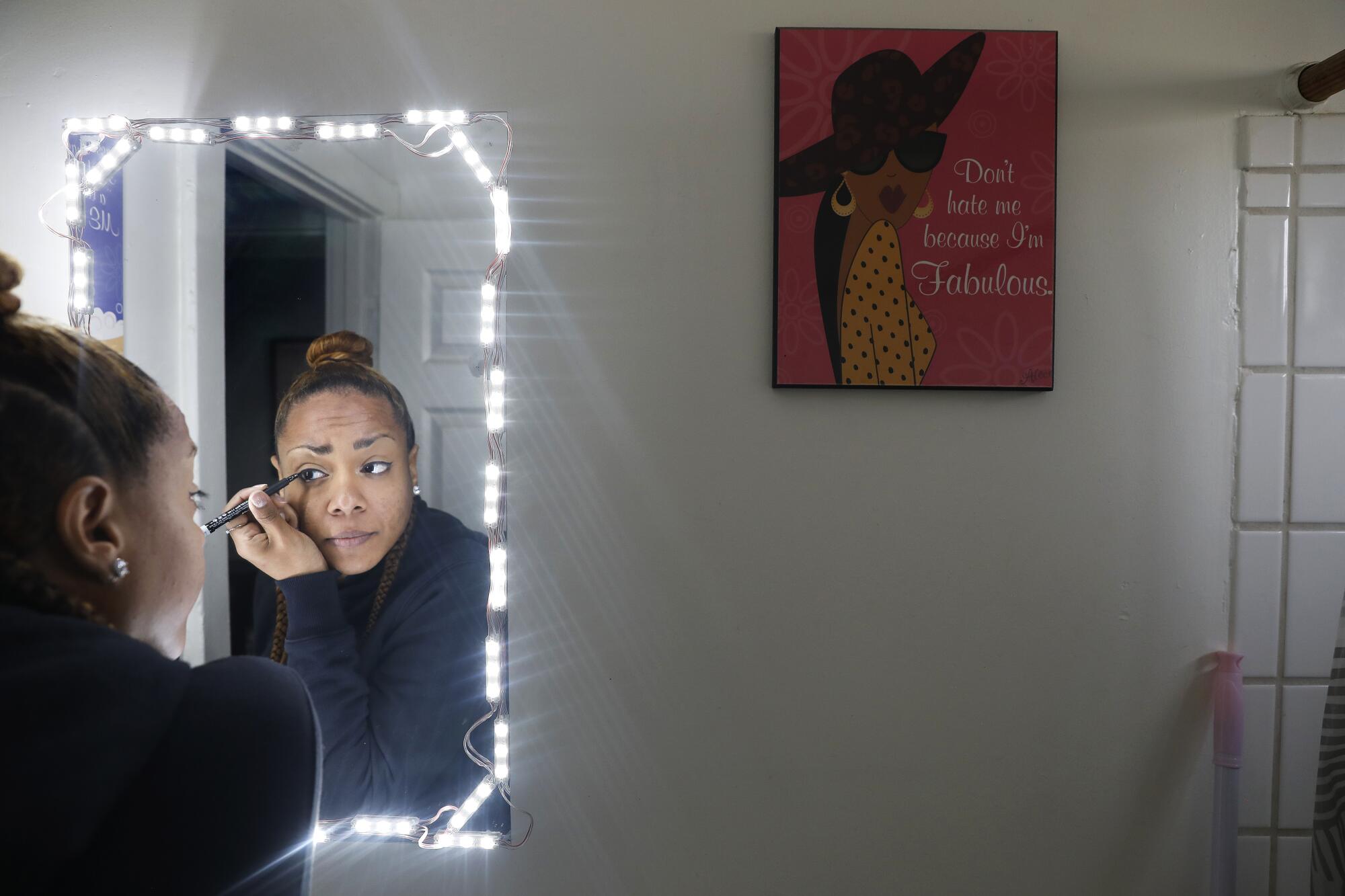
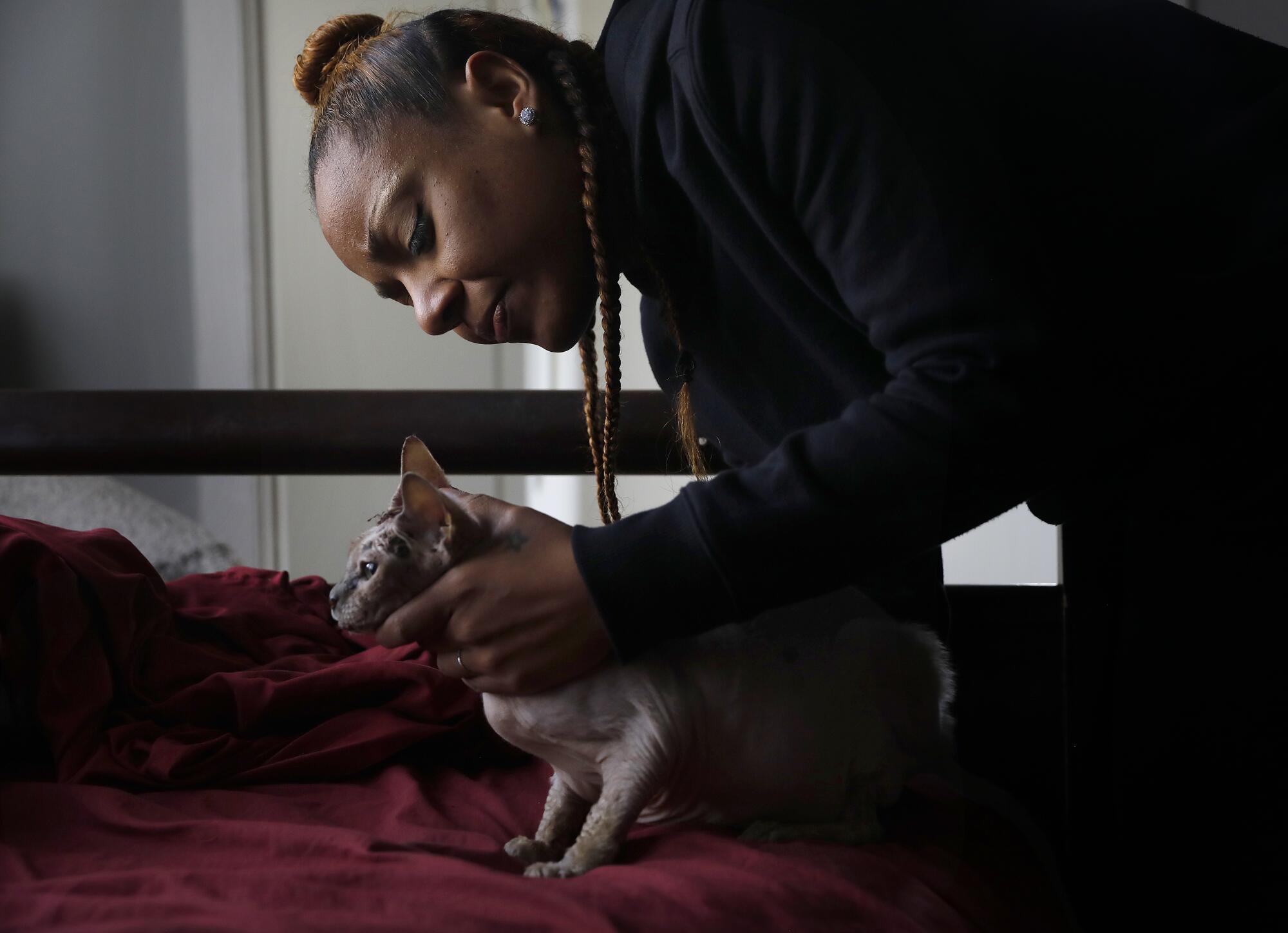
Expediency was critical to clear the docket for the next day’s wave. In quick spurts, Judge Alison Mackenzie called renters and their landlords to the table in front of the courtroom and repeatedly urged them to come to a settlement. An agreement, she said, would let them maintain a little control over what was going to happen.
A tenant might secure a few more weeks to stay in their home, or, at minimum, ensure that their evictions did not become public and visible to future landlords (which happens once a judgment is entered and can make it even more difficult to find affordable rentals). Landlords might gain assurance that tenants would leave on a certain date or that they would pay back some of what they owed.
“Let’s be solutions-oriented,” Mackenzie told Graham that day, urging her to try to come to an agreement with the landlord.
Along with Graham’s case, there was a young man in black jeans whose landlord threatened to pursue him in small claims court if he didn’t immediately hand over his keys, a tenant who called in sick the day before, only to have the trial go forward with a judgment against him, and a couple who agreed to move out within weeks in exchange for their eviction remaining hidden from public view.
Los Angeles County supervisors declared a state of emergency over the homeless crisis, a move aimed at speeding up service delivery to the tens of thousands of people suffering outside.
Graham, 36, had gotten her real estate license in the months before the pandemic and was learning the ropes of the business, trying to build a clientele by guiding well-to-do renters at an agency in Brentwood when the pandemic shut everything down.
The open houses came to a halt and she retreated to the studio on Rampart Boulevard that she shares with her two cats, Yoda and Jordan. She stayed close to her family with video calls, but they were far away, in El Paso.
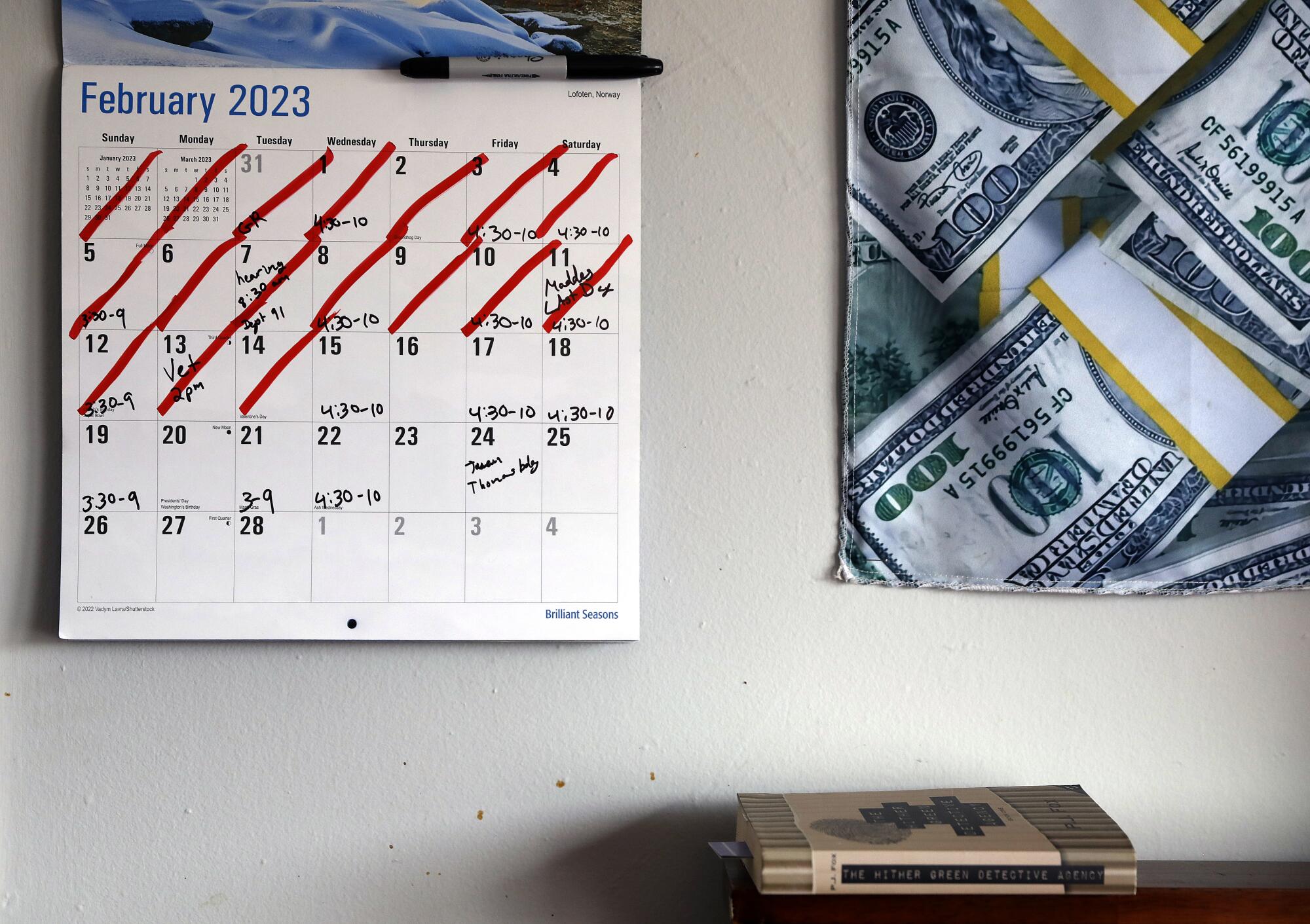
On the wall across from her bed, in a room that doubles as living room and bedroom, she hung a poster reminding her: “Believe in yourself.” But the isolation was painful, and she fell into a deep depression for months that made it difficult to go outside — in a neighborhood where, as a single woman, she had never felt fully safe.
She applied for and secured COVID rent relief but discovered that it wouldn’t cover all of the months she had been unable to pay — she was still about $2,300 behind.
In May, she began working part time at a clothing store in Glendale, taking the bus one hour each direction, arriving home just before midnight and earning just slightly more than the $1,150 monthly rent. Then in November, she returned home to a three-day notice taped to the door. She had 72 hours to pay the back rent or leave.
“If you fail to perform or otherwise comply, Landlord declares the forfeiture of your Rental/Lease agreement and will institute legal proceedings to obtain possession,” it read.
When she didn’t make the deadline, the trial was scheduled for February.
The morning of her trial, she woke up feeling confident. Just a couple of weeks earlier, county officials had extended their eviction moratorium through the end of March. Graham, who watches the evening news religiously, saw multiple stories explaining that under the moratorium landlords cannot evict low-income tenants who say they could not pay rent because they were harmed financially by COVID-19.
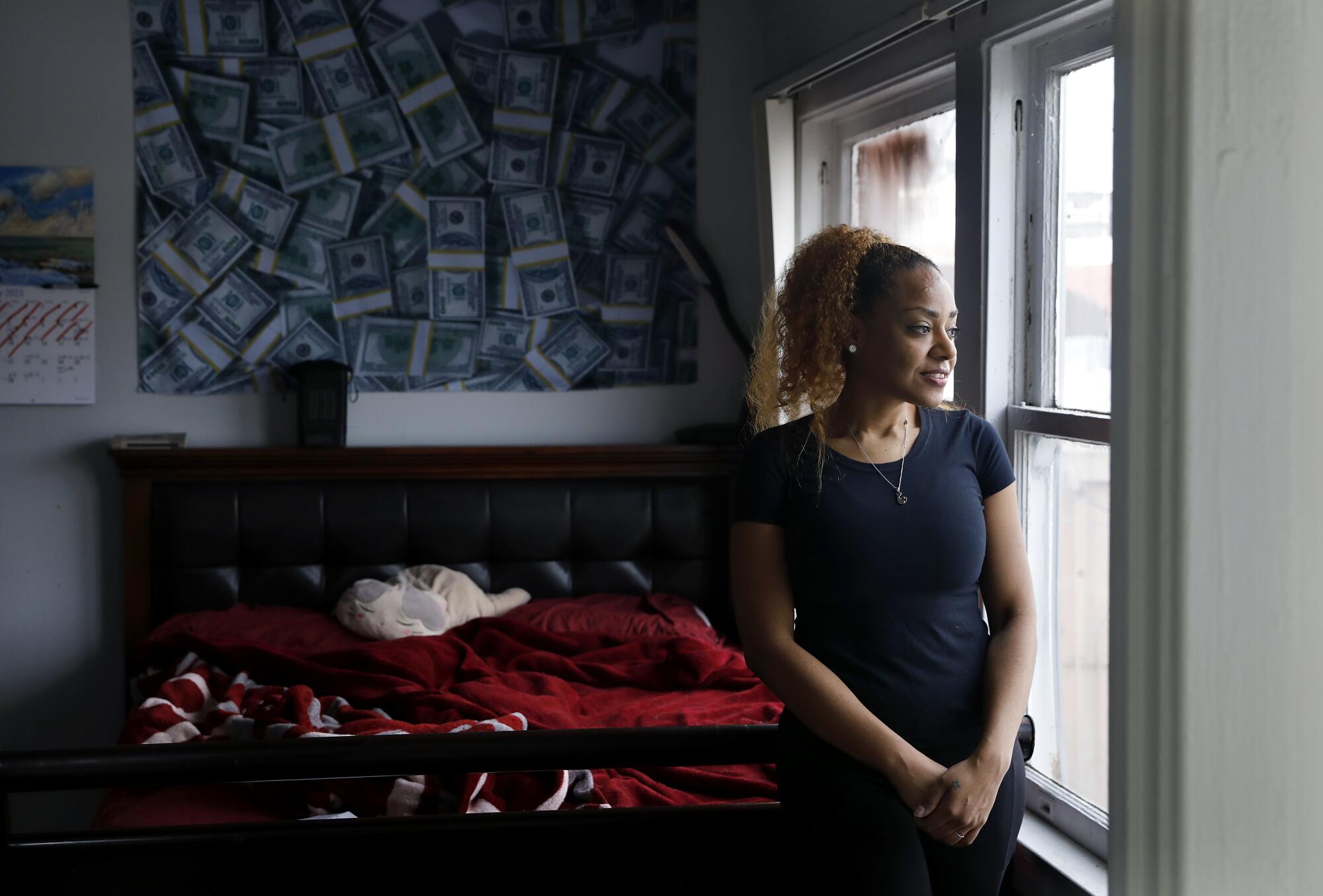
But as Mackenzie repeatedly explained to renters in her courtroom, “it’s more complicated than that.”
The protections apply for nonpayment of rent due between July 1, 2022, and March 31, 2023, due to a COVID-19 financial hardship for households with income at or below 80% of the area median income. In addition, tenants need to have experienced a substantial loss of monthly household income of at least 10%.
The Board of Supervisors voted to extend the pandemic-era eviction moratorium by two months, to the end of March. The countywide moratorium was set to expire Jan. 31.
But landlords are not barred from filing eviction cases; the moratorium simply gives tenants a defense to use when a case is filed. To take advantage, they need to understand how to navigate the court system and properly present evidence on their own behalf. Graham, like most of the renters in court without lawyers, didn’t know any of that.
By the time she arrived in court about 10:30 a.m., she had resigned to leaving the apartment but was determined to fight to stay longer so that she could save for a new home.
“I would end up homeless if I had to move out by the end of February,” she said. “I don’t have a place to stay.”
The judge called her case and urged Graham and Benjamin Taylor, the lawyer representing the landlord, to go into the hallway and try to work out a deal.
Graham wanted to remain in the studio, paying rent, until July 1, more than four months — an impossibly long time in eviction court, where, when tenants negotiate for more time, it’s often a matter of weeks not months.
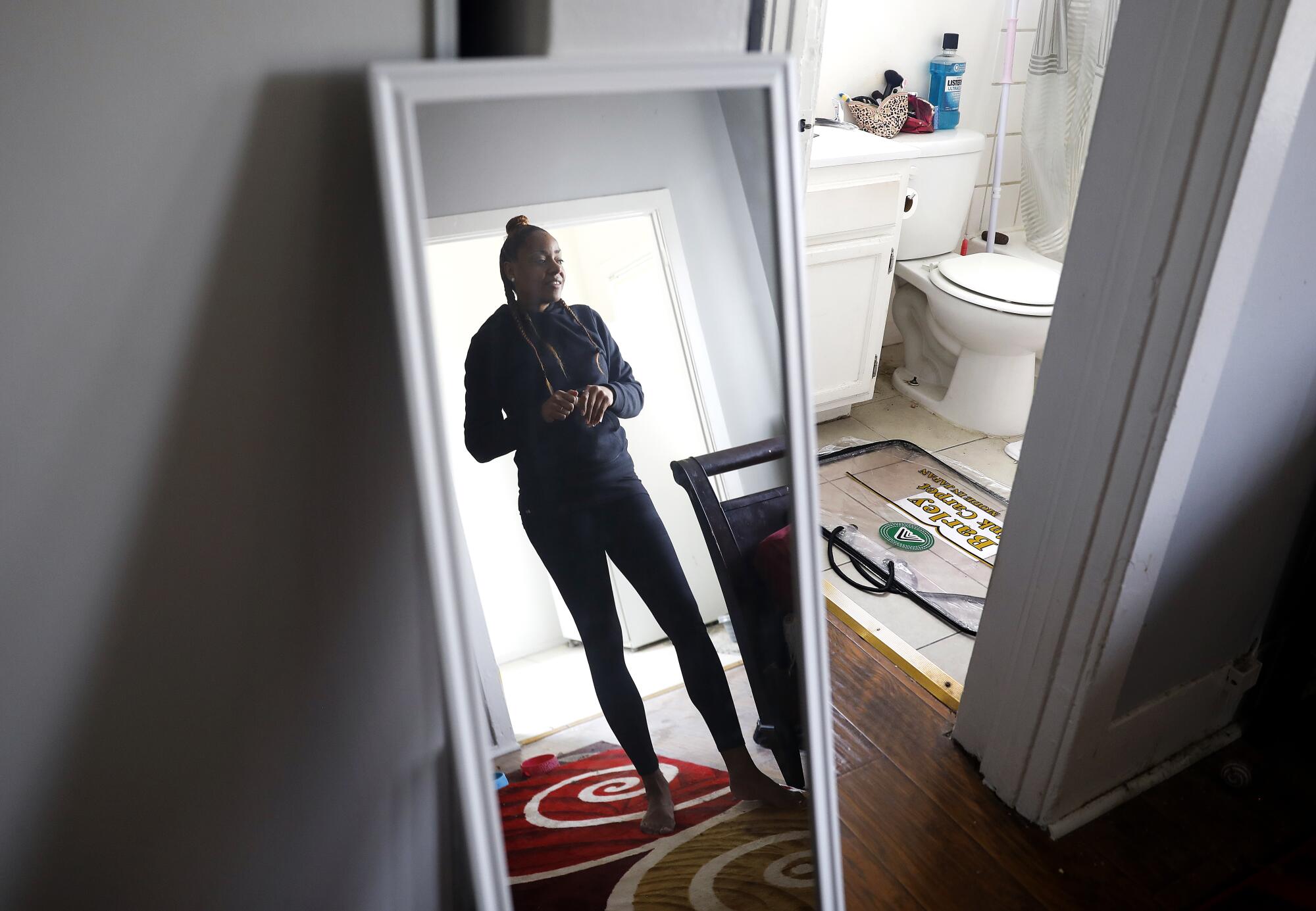
In the afternoon, Graham and Taylor returned to the courtroom and Taylor explained that they had not been able to come to a settlement. Graham was asking for too much time.
“I can do the bench trial this afternoon,” the judge said. But she urged them to try one more time. Soon they returned again, still without an agreement.
“I still need more time,” Graham repeated. “You can see I’m trying to get on my feet.”
“That’s not going to be a legal defense,” the judge replied.
She urged Graham and Taylor to continue negotiating.
“If we go to trial and you lose, you’re out,” Mackenzie said. “I really think you would prefer to find a solution.”
“Can I have a chance to speak to the property owner?” Graham asked after more back-and-forth. “I don’t think they understand the full spectrum of what’s happening on my end.”
“They don’t have the full story,” she added later. “I live there by myself. I’m trying to get back on my feet.”
Mackenzie told Graham that the amount of time she was asking for was unreasonable. But, she added, “if you think you can get ahold of this owner, fine. Otherwise I’m ready to go at 2:30 p.m.”
Outside in the hallway, Graham paced back-and-forth on the phone with the property owner’s representative. In a 20-minute conversation she told her story — all of the things she was not able to fully explain in front of the judge — how she’d applied for rent relief but didn’t realize it wouldn’t cover all of the unpaid rent she accumulated during the first year and a half of the pandemic, how she’d been working since May and had paid since then but was only making enough to make ends meet month to month, how if she were evicted now she would be out on the street.
“I just need more time,” she told him again and again.
Eventually, he agreed.
When Graham returned to face the judge, the courtroom that had been bustling with eviction cases throughout the day was quiet and empty except for Taylor, the bailiff and the clerk.
Mackenzie returned to the bench, and Taylor explained that they had reached an agreement.
As long as Graham paid the rent every month, she could stay in the apartment until the end of June. If she did not, she would be locked out. The judge set a follow-up hearing in July.
“Hopefully you’re going to do everything you need to do so that date I will dismiss the whole case,” Mackenzie said. “It will be like this never happened.”
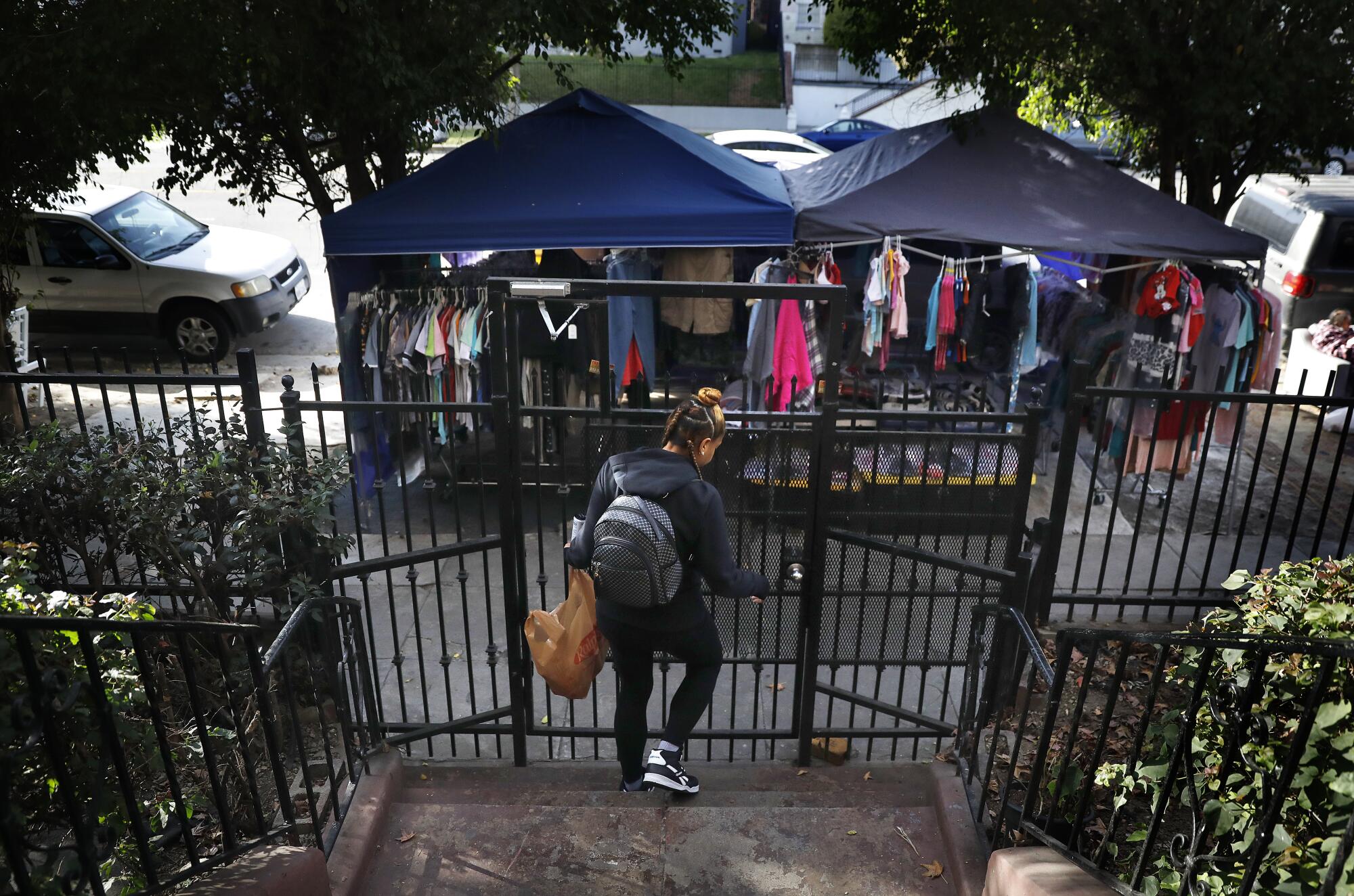
Graham walked out of the courtroom and headed to the bus stop. She had earned a reprieve that was far more than most others in her position and she still faced an uphill battle: four months to work more hours, to try to get back into real estate again, to save thousands of dollars and move into a place that would probably cost hundreds more per month than her current studio.
None of it was certain. But in that moment, as she got back on the bus, she felt proud. Confident in herself.
Later, she would think about how the pandemic had upended her life, about the stress and panic and depression that had overwhelmed her, and she would remind herself that she survived.
“We’ve been through the fire now,” she thought. “Let’s get to something better.”
More to Read
Sign up for Essential California
The most important California stories and recommendations in your inbox every morning.
You may occasionally receive promotional content from the Los Angeles Times.


